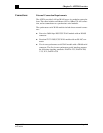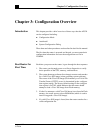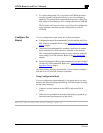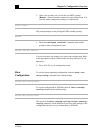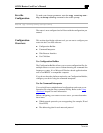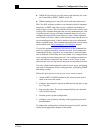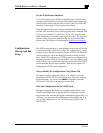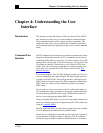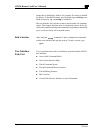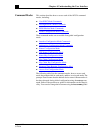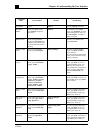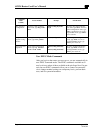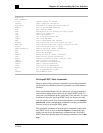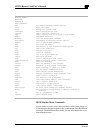
Chapter 4: Understanding the User Interface
August 1997 Page 4-1
2524UM
Chapter 4: Understanding the User
Interface
Introduction
This chapter describes the features of the user interface.The AI2524
user interface provides access to several different command modes.
Each command mode provides a group of related commands. This
chapter describes how to access and list the commands available in
each command mode and explains the primary uses for each command
mode.
Command Line
Interface
AI2524 commands can be entered at a terminal connected to the router
using the command line interface (CLI). Commands may also be en-
tered using the Web Browser interface. All routers using the Cisco IOS
software have a home page. From this home page, you can access the
Web Browser interface, which allows you to execute AI2524 com-
mands. You can execute these commands by clicking on them or en-
tering them in a command field. This feature is described in Web
Browser Interface.
For security purposes, the Cisco IOS software provides two levels of
access to commands: user and privileged. The unprivileged user mod
is called user EXEC mode. The privileged mode is called privileged
EXEC mode and requires a password. The commands available in user
EXEC mode are a subset of the commands available in privileged
EXEC mode.
If your router or access server does not find a valid system image, or
if its configuration file is corrupted at startup, the system might enter
read-only-memory (ROM) monitor mode. ROM monitor mode can
also be accessed through privileged EXEC mode.
From privileged EXEC mode, you can access the global configuration
mode and a number of specific configuration modes. These modes are
listed in Command Modes
.
Entering a question mark (?) at the system prompt allows you to obtain
a list of commands available for each command mode.
Almost every configuration command also has a
no
form. In general,
use the
no
form to disable a feature or function. Use the command
without the keyword
no
to reenable a disabled feature or to enable a



